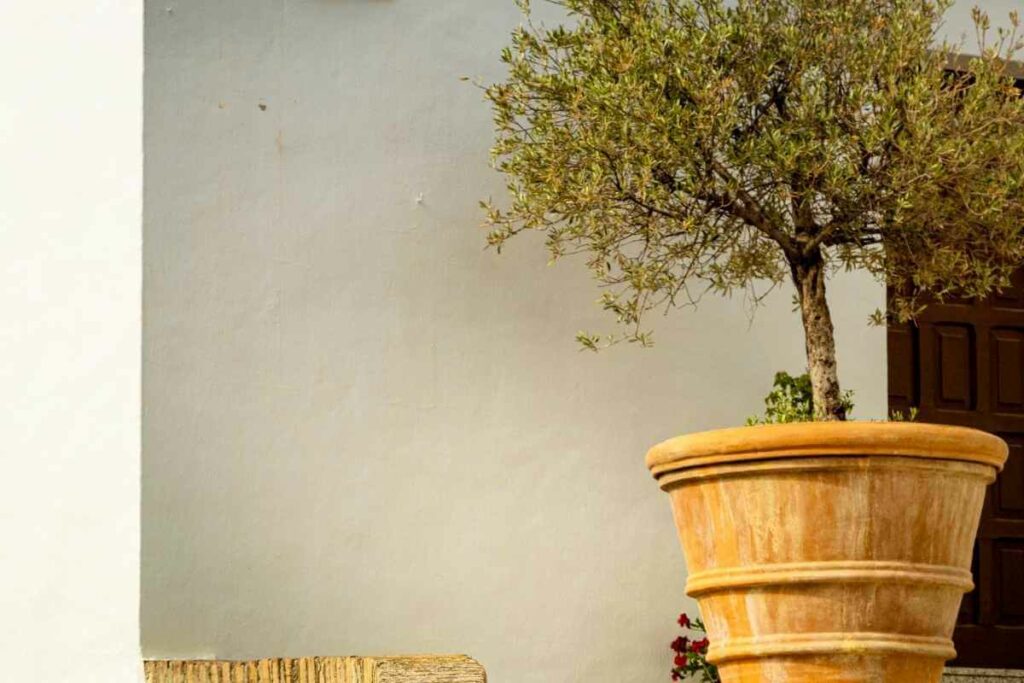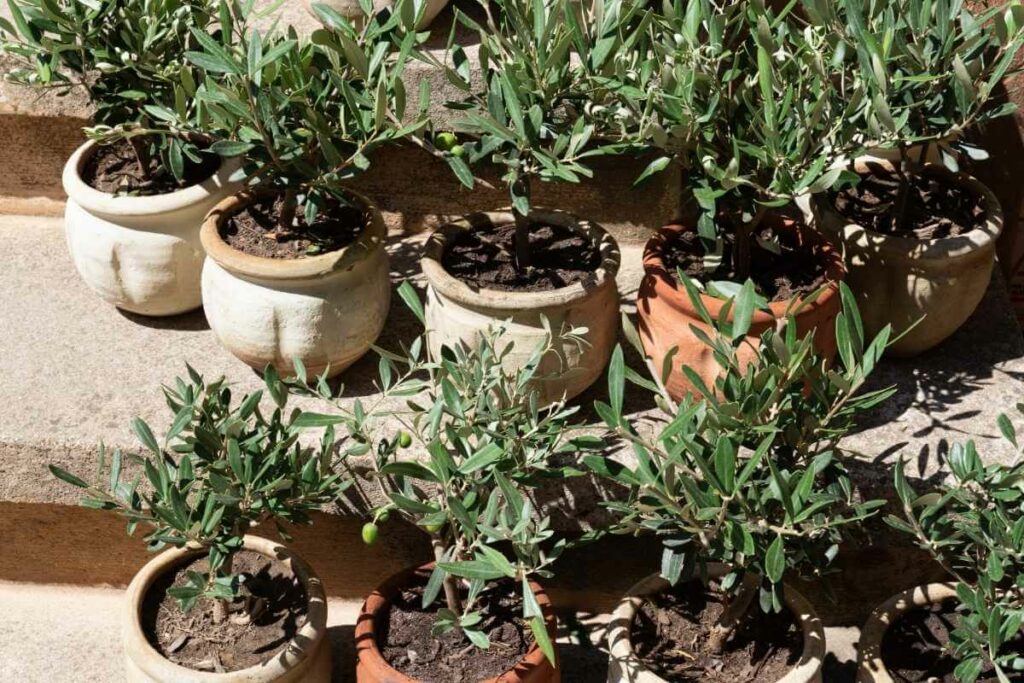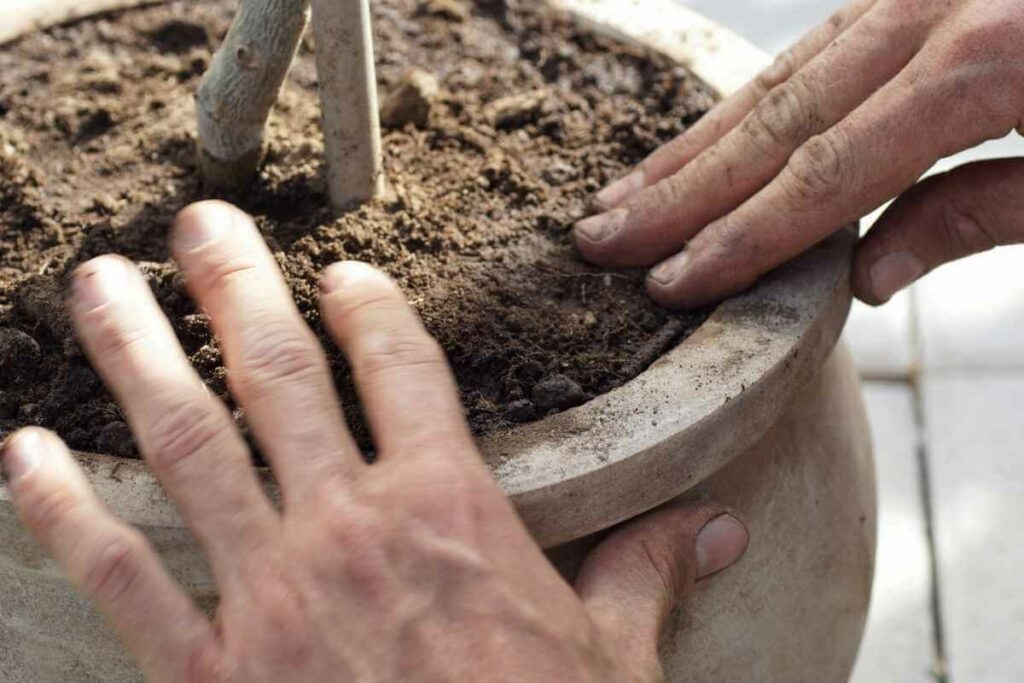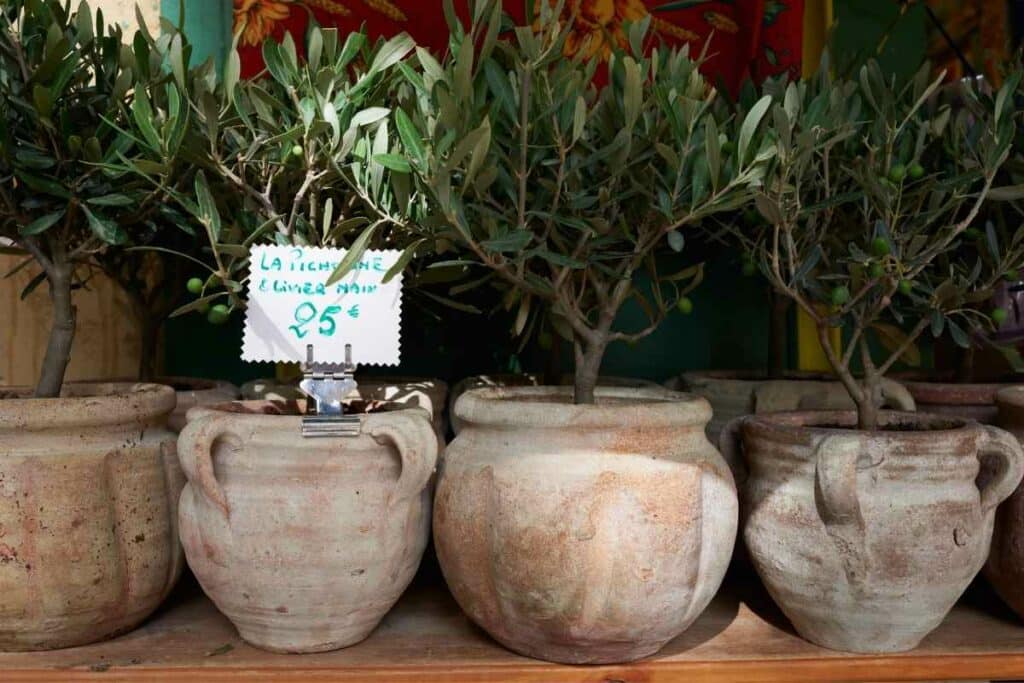Olive trees are great plants for pots both indoors and outdoors but getting the right soil is essential to their growing success.
So, what is the best soil for olive trees when they’re in a pot?
The short answer is a potting mix that drains well. This is because it has good spacing between particles – roots can penetrate, water can flow, and the tree can absorb essential nutrients to be healthy.
However, since olive trees in pots don’t have a lot of soil, you’ll also need to ensure it maintains adequate nutrients once established too.

This article will tell you everything you need to know about getting the soil right for your potted olive trees, including how to prepare the soil, test it, and care for the tree once planted.
Consequently, you can expect a well-grown, healthy tree.
What is the best soil for olive trees in pots? Soil requirements
If you’re growing an olive tree in a pot, you’ll need to give it everything it needs to grow healthy and survive.

Here are some of the key things you’ll need to ensure.
Type of soil
A potted olive tree can cope with a mix of silt, sand, and clay, and loamy soils like clay loam, sandy loam, silty clay loam, and silt loam.
pH of the Soil
The best soil for olive trees would be a neutral soil with a pH between 6 and 7.
Soil drainage
The soil should drain well. The pot or container that the olive tree is in should have drainage holes.
All in all, potting mix is best thanks to its large particles that provide air to the olive tree’s roots while holding onto moisture with smaller particles.

The potting mix should be rich in nutrients like phosphates, nitrogen, and potassium too so check the package ingredients when purchasing potting soil.
You can, however, make up your own potting mix for your olive tree.
Making olive tree potting mix
If you want the best soil for olive trees, you might just have to make it yourself!
It’s actually pretty straightforward to make up as long as you do it carefully.
You’ll need:
- Bark (or vermiculite/perlite)
- Sand
- Peat
You need equal parts of each ingredient, so measure carefully.
Once Mixed -You’ll find the potting mix is loose enough for excess moisture to drain through.
Does olive tree soil need changing?
Yes – but not very often.
You’ll find that your olive tree will probably outgrow its container in three or four years.

When you’re repotting the tree, it’s best to mix up a fresh batch of your potting mix to replace the old soil.
If you are changing the container, bear in mind that wood or ceramic pots are the best for olive trees.
This is because they allow for more evaporation. Plastic, glass, or metal, on the other hand, retain more moisture.
If you want to keep using the same pot, this is possible. You should remove the tree from the pot, prune its roots and then re-pot it with a new potting mix.
Evaluate your olive tree soil
When looking for the best soil for olive trees, you need to determine its biological, chemical, and physical composition.
This is so that your tree is healthy and grows well.
The physical composition can be easily identified by touch or sight.

You’ll be able to look at the soil and feel it. However, for the chemical and biological composition, you’ll need to do a soil test.
Testing soil is important so that you can get the right pH and know whether or not you need to add anything to it.
Also, olive trees can’t tolerate poor draining soils so testing moisture levels is crucial to their survival.
It’s pretty inexpensive and relatively easy to test your own soil. Home soil testing kits are great and have results that are comparable to tests done in laboratories.
A test can tell you what macronutrients your soil will need.
For Example – It might be lacking in nitrogen, sulfur, potassium, or phosphorus. If so, you can add a fertilizer that’s suitable for olive trees.
Testing pH
You can source cheap pH testing strips online and they’re also available in garden centers too.
The pH should be neutral (i.e., between 6 and 7 ideally):
- If your soil’s pH is too acidic (below 6), adding lime will raise the pH.
- If it’s too alkaline (above 7), adding sulfur will bring it down.
If you add fertilizers to soil, they can alter the pH of it over time so it’s important to test pH regularly and adjust with lime or sulfur depending on the results.
The importance of drainage
When considering the best soil for olive trees, drainage is essential.
Here are some tips on ensuring adequate soil drainage for your tree:
- Ensure the pot has lots of drainage holes to stop excess water from sitting around the tree’s roots.
- Put between 1 and 1.5 inches of small stones at the bottom of the pot before adding your soil.
- If you have a tray, also put gravel in it to prevent too much water sitting in it.
- If the container has very large drainage holes, you can add a layer of screen at the bottom before adding the stones and soil.
Final thoughts on the best soil for olive trees
Choosing the perfect pot and soil will mean your olive tree has the best chance of being healthy and growing well. If you can test your soil, do so.
Knowing its composition and pH will mean you can tailor it to be optimal for an olive tree’s needs.
When you’ve got the perfect soil and pot set up, remember it’s not a done deal. Maintaining and monitoring is really important.
Once a year (at least), you should add compost to boost the soil’s nutritional value – especially its nitrogen content.
Getting a cheap moisture meter will really help you control the tree’s moisture so that you know you’re watering it appropriately and that it’s draining well.
Finally, monitoring your tree for disease, pests, and weeds is important too.


